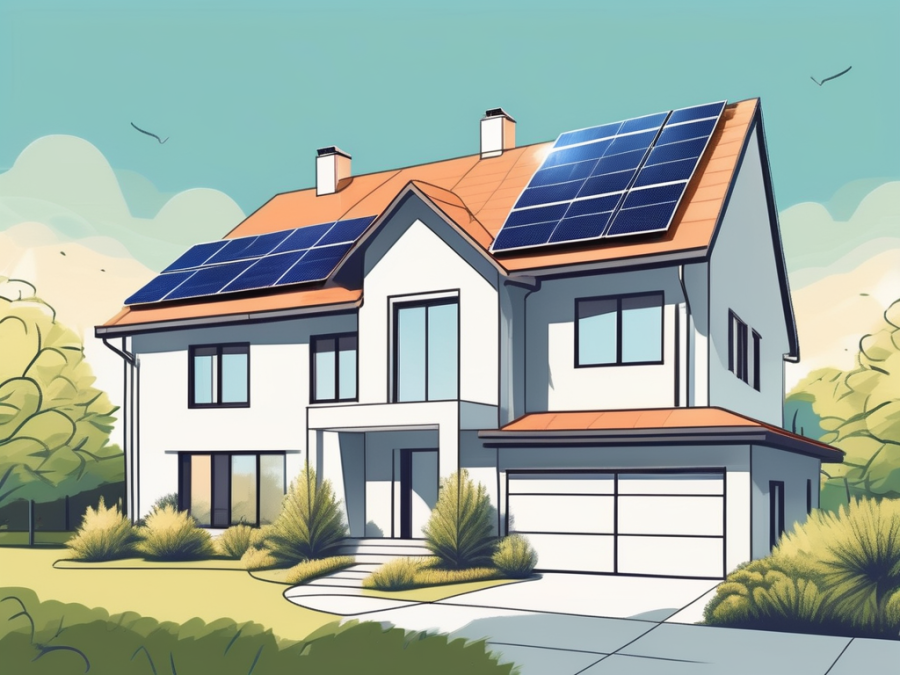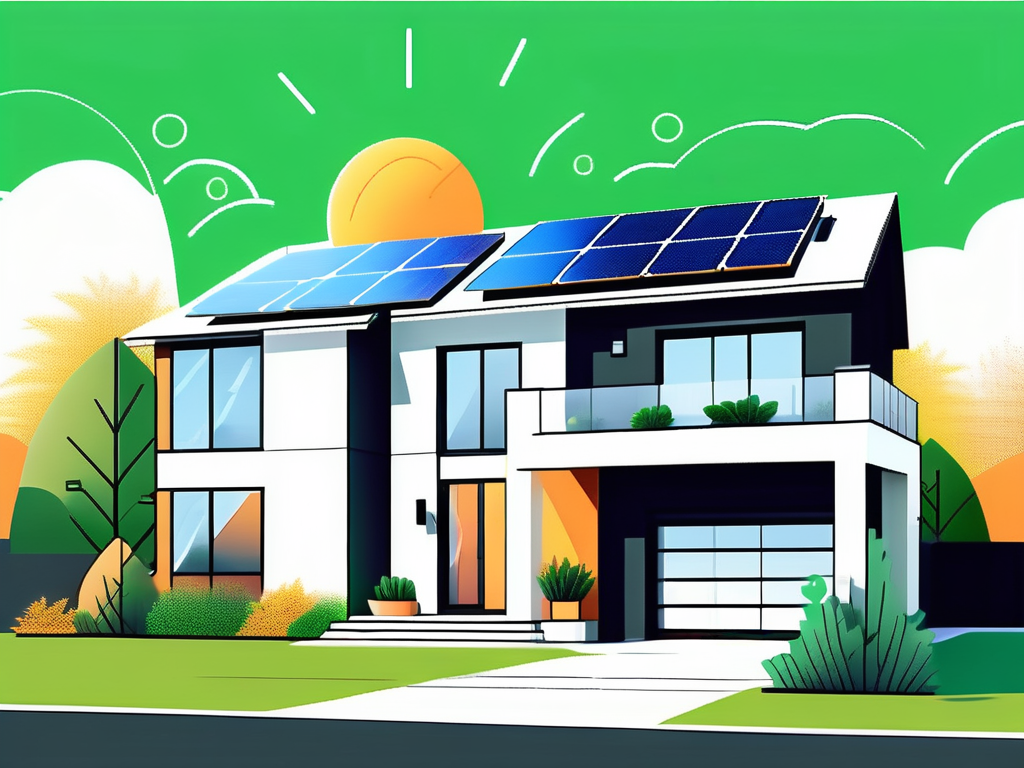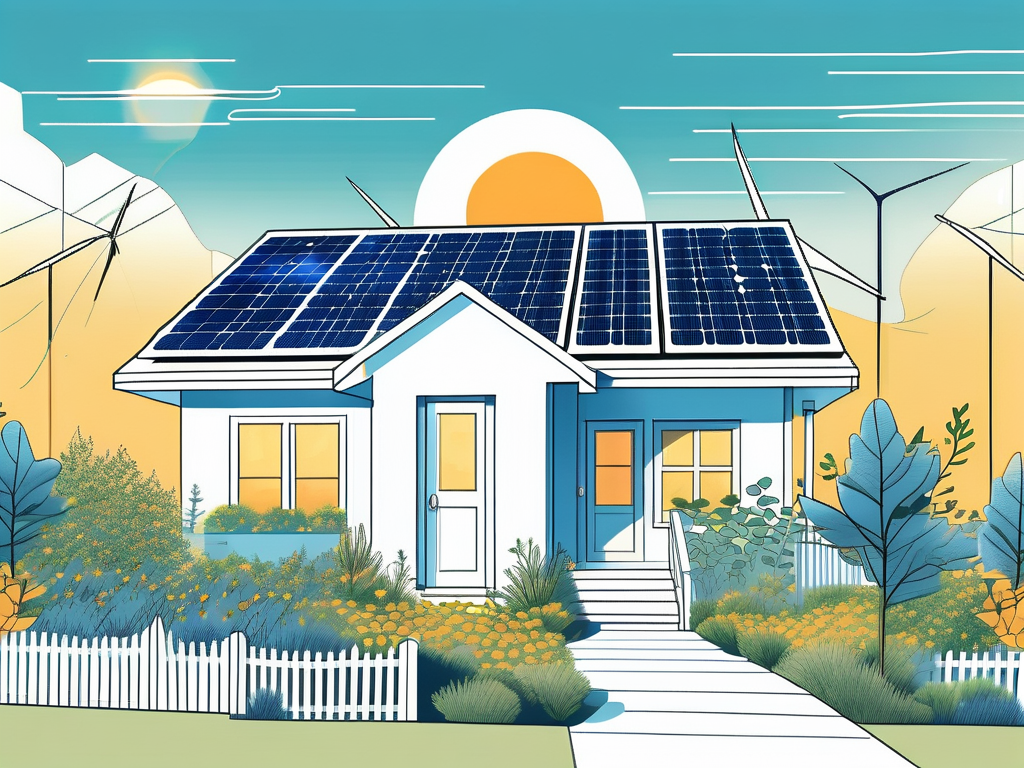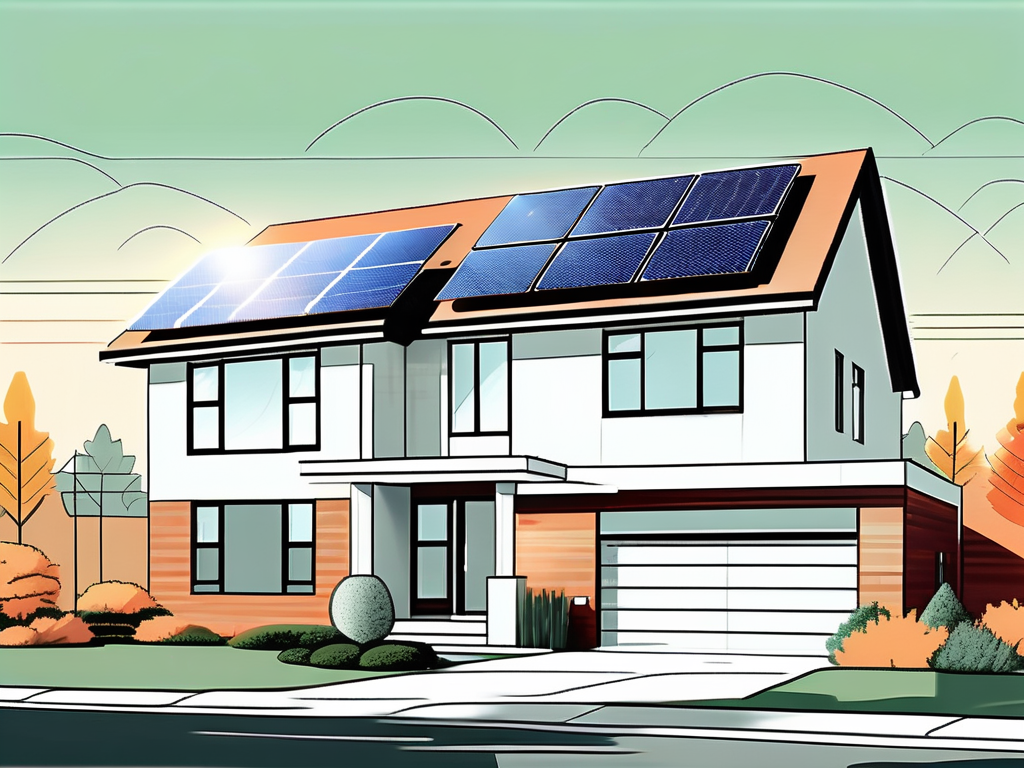
Solar panel energy has gained immense popularity among homeowners in recent years, and for good reason. As people become more conscious of their environmental impact and seek ways to reduce their energy bills, solar energy presents a viable solution. In this article, we will explore the benefits of solar energy, including its financial advantages, environmental impact, and how it can increase home value.
Understanding Solar Panel Energy
The Science Behind Solar Panels
Solar panels work by converting sunlight into electricity through the photovoltaic effect. When sunlight strikes the solar cells, it knocks electrons loose from their atoms, allowing them to flow freely. This flow of electrons generates direct current (DC) electricity, which is then converted into alternating current (AC) electricity by an inverter, making it usable for household appliances.
Different types of solar technologies can also harness solar energy, including concentrated solar power and solar thermal systems. However, photovoltaic panels are the most common choice for residential installations due to their efficiency and versatility. The efficiency of solar panels can vary based on several factors, including the angle of sunlight, temperature, and the presence of shading. Advances in technology continue to improve the efficiency rates of solar panels, making them an increasingly viable option for homeowners looking to reduce their carbon footprint and energy costs.
Types of Solar Panels for Home Use
There are several types of solar panels available for residential use, each with distinct features and benefits:
- Monocrystalline Panels: Known for their high efficiency and longevity, these panels are made from a single crystal structure. They typically have a sleek black appearance and perform better in low-light conditions, making them a popular choice for homeowners with limited roof space.
- Polycrystalline Panels: These panels are made from multiple crystal structures and are generally less expensive but offer slightly lower efficiency. Their blue hue is a recognizable feature, and they are often favored by those looking for a cost-effective solution without sacrificing too much performance.
- Thin-Film Panels: Lightweight and flexible, these panels can be integrated into building materials but typically have lower efficiency compared to crystalline panels. They are particularly useful for unconventional installations, such as on curved surfaces or in areas with less sunlight.
Choosing the right type of solar panel depends on various factors, including budget, energy needs, and available roof space. Additionally, homeowners should consider the local climate, as regions with more consistent sunlight may benefit more from high-efficiency panels, while those in cloudier areas might prioritize cost and flexibility. It’s also essential to evaluate the warranties and lifespan of the panels, as these can significantly impact long-term investment returns. With the increasing availability of solar financing options and incentives, many homeowners are finding that solar energy is not only a sustainable choice but also a financially sound one.
Financial Advantages of Solar Energy
Cost Savings Over Time
One of the most compelling benefits of solar energy is the significant cost savings over time. By generating your own electricity, homeowners can significantly reduce their monthly electricity bills. In many cases, solar panel installations can lead to savings of over 50% on utility bills.

Moreover, many homeowners find that their solar systems quickly pay for themselves through the energy savings they accumulate, making solar panels a wise investment for the long term. As energy prices continue to rise, the fixed nature of solar energy costs provides a hedge against inflation, ensuring that homeowners are not at the mercy of fluctuating utility rates. This stability can be particularly beneficial for families on a fixed income, providing peace of mind and financial predictability.
Federal and State Incentives
To encourage the adoption of solar energy, various federal and state incentives are available. The federal government offers a tax credit for solar energy systems, allowing homeowners to deduct a percentage of their solar installation costs from their federal taxes. Additionally, states may provide rebates, property tax exemptions, and net metering programs that further enhance the financial appeal of solar energy.
These incentives not only reduce the initial installation cost but also help offset the long-term investment, making solar energy more accessible to homeowners. Furthermore, as technology advances and the cost of solar panels continues to decrease, many states are introducing new programs that aim to make solar energy even more affordable. Community solar programs, for example, allow individuals who may not have suitable roofs for solar panels to invest in shared solar projects, thus broadening the reach of solar benefits to a wider audience. This collaborative approach not only fosters community engagement but also amplifies the financial advantages of transitioning to renewable energy sources.
Environmental Impact of Solar Energy
Reduction in Carbon Footprint
Switching to solar energy offers a substantial reduction in carbon footprint and greenhouse gas emissions. Unlike fossil fuels, solar power generates clean energy without releasing harmful pollutants into the atmosphere. By harnessing sunlight as a primary energy source, homeowners can contribute to the global effort to combat climate change.

In fact, a typical residential solar panel system can offset several tons of carbon dioxide emissions annually, promoting a healthier environment for future generations. This reduction in emissions not only helps mitigate the effects of climate change but also improves air quality, leading to better health outcomes for communities. Studies have shown that areas with higher adoption of solar energy report fewer respiratory issues and other health problems associated with air pollution.
Conservation of Natural Resources
Solar energy is sustainable and helps conserve precious natural resources. While fossil fuels are finite and contribute to environmental degradation, solar power relies on an abundant and renewable source of energy—the sun.
By reducing reliance on non-renewable resources, homeowners harness solar panels to play a crucial role in promoting sustainability and environmental stewardship. Furthermore, the manufacturing of solar panels has seen significant advancements, with many companies now using recycled materials and sustainable practices to minimize environmental impact. This not only conserves raw materials but also encourages a circular economy where products are reused and repurposed, further enhancing the positive effects of solar energy on resource conservation.
Increasing Home Value with Solar Panels
Attracting Eco-Conscious Buyers
Installing solar panels can significantly increase your home’s resale value. Many homebuyers, especially those concerned about environmental issues, seek properties with solar energy systems already in place. A solar installation can make your home stand out in the competitive real estate market, attracting eco-conscious buyers willing to pay a premium for homes equipped with renewable energy solutions.

Statistics show that homes with solar panels sell for more than those without, further amplifying the financial benefits of investing in solar energy. In fact, a study by the National Renewable Energy Laboratory found that homes with solar energy systems can sell for an average of $15,000 more than comparable homes without solar. This trend is particularly pronounced in areas with strong solar incentives and a culture of sustainability, where buyers are actively looking for ways to reduce their carbon footprint and energy costs.
Long-Term Investment Returns
Solar panels can be viewed not just as a home improvement, but as a long-term investment. The return on investment (ROI) for solar energy systems can be substantial, with reports indicating that homeowners can receive a return of 10-20% on their investment depending on various factors such as incentives and energy costs.
Additionally, with energy prices expected to rise in the coming years, the savings potential from solar power will only continue to grow, making it a financially sound choice for homeowners. Many states offer tax credits, rebates, and other incentives that can significantly reduce the upfront costs of solar panel installation, further enhancing the financial appeal. Furthermore, as technology advances and installation costs decrease, the accessibility of solar energy systems continues to improve, making it an increasingly attractive option for homeowners looking to enhance their property value while contributing to a sustainable future.
Maintenance and Durability of Solar Panels
Lifespan of Solar Panels
Solar panels are designed to be durable and require minimal maintenance throughout their lifespan, which typically exceeds 25 years. Most manufacturers offer warranties that guarantee performance and durability, giving homeowners peace of mind regarding their investment. Additionally, regular inspections and occasional cleaning may be required to ensure optimal efficiency.
With the right care and attention, solar panels can continue to yield benefits for decades, making them a reliable energy solution for homeowners.
Handling Weather Conditions
Solar panels are built to withstand a variety of weather conditions, from intense sunlight to heavy snowfall. Most panels have robust designs that enable them to resist wind, rain, and hail. Homeowners should remain aware of their local climate and may need to take certain precautions during extreme weather to protect their investment.
Regardless, the resilience of modern solar panels ensures that they can perform effectively in diverse environmental circumstances, further solidifying their reputation as a valuable energy source.
In summary, the multitude of benefits associated with solar energy make it an excellent choice for homeowners looking to improve their financial situation while reducing their environmental impact. By understanding the technology, taking advantage of financial incentives, and recognizing the long-term value of solar installations, homeowners can make informed decisions that benefit both their wallets and the planet.
